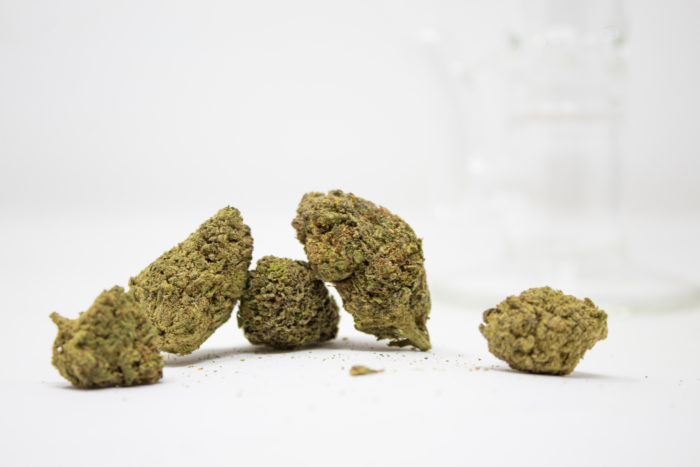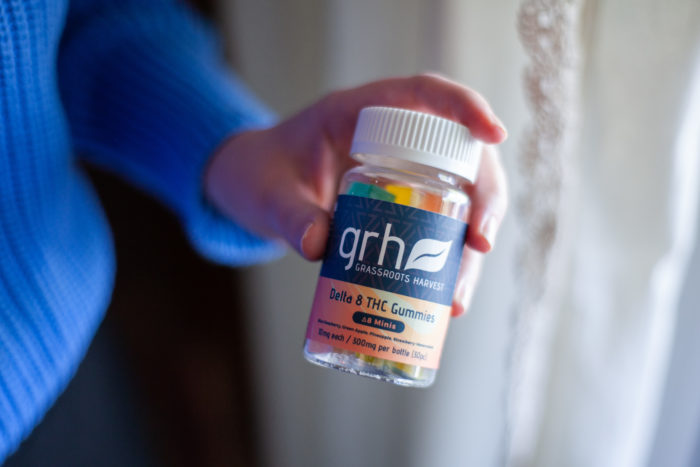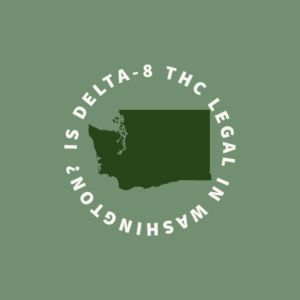In 2014, Colorado announced its decision to allow marijuana dispensaries to sell cannabis. The entire cannabis industry celebrated what was a huge step forward in marijuana’s history within the United States. Since then, more states have passed favorable laws allowing for the use, sale, possession and distribution of cannabis and its derivative products. We’re excited to see what the next steps forward are in the cannabis industry.
But it was not always this easy. At a point, marijuana was the number 1 enemy of the general public. To be frank, the history of marijuana laws is long, muddy, and complex and steeped in racism and xenophobia. Communities and families of color have experienced havoc and sick people haven’t always had access to things that might benefit their ailments.
Irrespective of where we are now, it is important to know where we are coming from. This helps ensure the future laws are open, fair and allow for easy access for everyone. Ever wondered about the history of cannabis in America, and why it isn’t Federally legal? Read on for our breakdown on a history of cannabis in the US. Of course, there’s more to this story than we’re able to write into one blog, but these are the major points (in our opinion!).

Stage 1: Marijuana‘s Introduction to North America
The history of marijuana dates back hundreds of thousands of years. But according to historians, it made its way to North America through Jamestown settlers in 1611. For many years, hemp was critical in the production of clothes, sails and ropes. These products became so popular and valuable that they became legal tender in certain states. Hemp became so necessary that in 1762, the Virginia Assembly demanded farmers grow it and issued sanctions against those who didn’t.
Within the 1800’s, Irish physician – William O’Shaughnessy discovered the medicinal properties of cannabis in India and began to popularize its use within the western world. Its addition to the US Pharmacopeia was in the 1850s enabling pharmacies to sell and use it freely.
Stage 2: First Attempt at Regulation and Scare Tactics, Prohibition
The Pure Food and Drug act came about in 1906 with demands that all medicine have labels with their ingredients. It also placed cannabis within the same category as alcohol, opium and morphine – classifying them as addictive or dangerous drugs. This, although it was not clear at the time was the foundation for cannabis’s false representation which exists till today. The act also provided the government with control over food and drug products across the country.
Smokable weed as we know it today potentially came into the US in the 1910s through two routes. Potentially from Mexican refugees via Texas after the revolution, or it might have come in through sailors and immigrants from the Caribbean into New Orleans. However, consuming cannabis in the US probably started much earlier than that by Indigenous people.
In 1911, Massachusetts became the first state to demand a prescription for hemp. Between 1913 and 1933, 29 states moved to criminalize it. As more Mexican refugees continued to immigrate to the US and more Black citizens moved towards the northern cities, the climate within America started to shift. Some White people began to take issues with the increasing diversity and competition for work. This fear spread culturally as young white people began to grow afraid of connecting with black culture through jazz. Henry Anslinger (the man many consider to be responsible for the ban on marijuana) stoked fears about black people relating with white people.
Henry Anslinger
Anslinger would later become the head of the bureau of Narcotics in 1930. He got to work immediately spreading radical propaganda and misinformation about marijuana. Because so little about the substance, the public took ahold of the idea, causing the culture of pot paranoia. In 1936, a film Reefer Madness came out, spewing more lies about the effects of marijuana in order to reinforce the negative sentiment against cannabis. As though that weren’t enough Anslinger repeatedly linked marijuana and these false dangers to black communities once saying:
“There are 100,000 total marijuana smokers in the US, and most are Negroes, Hispanics, Filipinos and entertainers. Their Satanic music, jazz and swing, result from marijuana usage. This marijuana causes white women to seek sexual relations with Negroes, entertainers and any others.”
In 1937, Anslinger wrote the Marihuana Tax Act. It passed successfully, immediately banning cannabis within the country. 5 years later, cannabis would be removed the US Pharmacopeia. Fiorello LaGuardia, then New York Mayor was opposed to the act. He called upon the New York Academy of Medicine to create a committee in 1939 to conduct extensive research on the substance. Their findings? Anslinger’s claims were totally false. They published a report in 1944 which detailed the racial disparity uncovered within the enforcement of the Marihuana tax Act. Anslinger would then denounce the report as unscientific and force the committee to stop conducting studies into marijuana without his permission.
Stage 3: War on Drugs, Mandatory Minimums and Federal Scheduling
The Boggs Act came about in 1951, with mandatory minimum sentences for individuals with drug offenses. The Narcotics Control Act of 1956 followed up to tighten the sanctions. These laws did not account for the fact that cannabis is not a narcotic, but it furthered the agenda to place a link between cannabis and narcotics making it easier to traumatize communities of color.
In 1970, came the enaction of the Controlled Substances Act, placing all drugs into five schedules. Within this new grouping mechanism, Cannabis is in as a schedule 1 drug. This labels it as one that has a strong potential for abuse with no accepted medical benefit. In the same year, President Nixon tried to validate the ban on cannabis by creating the National Commission on Marihuana and Drug Abuse (also known as the Shafer Commission) with an intent to produce evidence to back up his anti-marijuana sentiments. However, the President went on to state that he had no intent to respect the results if the commission recommended decriminalization. A war on drugs was declared before a report was finished.
The next year, the Shafer commission discussed their findings via a live press conference. It echoed what was revealed via the LaGuardia report. Their finding was that cannabis was not a dangerous drug and their recommendation was that it be rescheduled. As expected, this recommendation was dismissed, and the Bureau of Narcotics was merged with two drug facing agencies to become the Drug Enforcement Administration (DEA).
Later Changes in Cannabis Laws
In 1974, the National Institute on Drug Abuse came to be. It would become the only entity that had the legal backing to cultivate cannabis – albeit for research. Stemming from this agency came the Investigational New Drug program.
Robert Randall would later make history as he would become the first American to receive marijuana from the government to treat his glaucoma. His victory became the bedrock for the NIDA’s IND compassionate use program.
But in the early 1990’s, the Bush government shut down the compassionate use program. They held the argument it had become too large and too expensive to maintain. Only 13 of the 40 patients were allowing to keep receiving marijuana after the program shut down. In 1986 came the introduction of higher penalties for distribution and possession of marijuana, again via the Anti-Drug Abuse Act. An amendment to the act also placed a three-strike policy for repeat offenders and the death penalty for drug barons/kingpins.
Stage 4: Light at the End of the Tunnel? Research, Medical Marijuana and Legalization
In 1996, California made history as it became the first state to legalize medical marijuana with three other states joining in over the next two years. This set precedent as over 20 states created medical programs between 1996 and 2012. The only downsize to this is the fact that Federal laws still take precedent.
In 2005, the DEA conducted a raid on 11 medical marijuana dispensaries in California. Although they did not make any arrests, they seized a large (unknown) amount of marijuana, interrupting numerous businesses. In 2009, the US Attorney General ruled that the DEA would no longer conduct raids on legal medical marijuana facilities. Also, the Department of Justice (DOJ) would no longer prioritize prosecution of legal patients.
In 2012, Colorado and Washington made history as they became the first states to legalize marijuana for recreational use – doing it via referendums. This would later go down as a turning point in public perception.
In 2014, the Rohrabacher-Farr Amendment prevented the Department of Justice from Interfering with state medical marijuana laws. Later that year, the government issued guidelines to banks providing financial services to legal marijuana vendors.
2018 saw Epidiolex become the first marijuana-based drug to gain approval by the Food and Drug Administration. Also, the introduction of the Farm Bill, which legalized hemp federally. In 2020, the United Nations reclassified cannabis and a decriminalization bill was passed through the US House of Representatives. Although it was not passed by the Senate, dozens of state and federal legislations have already been introduced.

Stage 5: Looking Ahead to the Future
At the moment, the largest and most important hurdle in Cannabis’s quest for legalization is its classification by the Federal Government as a Schedule 1 drug. By de-scheduling or rescheduling marijuana, the government would be giving an avenue to many to conduct more research into the substance, to learn about its benefits, side effects (if any), application, potency and so on.
The facts remain, irrespective of how far we have come in our journey, there is still a long way to go. It is essential we ensure the future of cannabis is free for all to use and enjoy without fear of needless prosecution.



